Bathrooms are high-use rooms that can demand a lot from the earth.
They’re a major source of household water consumption and they require energy to light, heat, and ventilate the space while each member of your household bathes on a day-to-day basis. A bathroom remodel is an opportunity to decrease your home’s impact on the planet in a number of ways, and almost all of them are related to choices in materials. An eco friendly bathroom is created through a blend of efficient, sustainable materials and universal designs, both of which help limit your carbon footprint over the long haul. Try integrating any of these eco-friendly design ideas into your own remodeling plans, and share ideas from your own eco-friendly bathroom remodel in the comments section below.
Resource conservation in the bathroom
In the bathroom, resource conservation is focused on water consumption and HVAC. Eco friendly lighting can help reduce energy consumption anywhere in the home, and the bathroom is a good place to start.
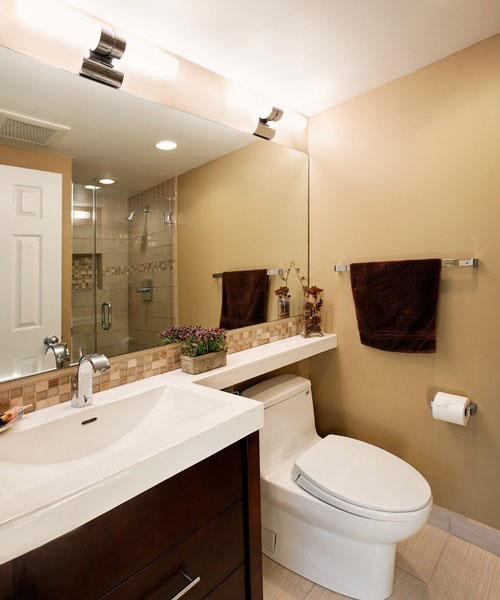
Low-flow fixtures help reduce water consumption in the bathroom. Water efficient shower heads and faucets increase aeration so flow is reduced without compromising pressure and performance. A dual-flush toilet can reduce toilet water consumption by up to 30%.
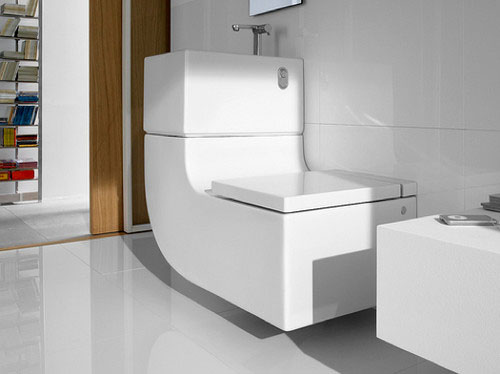
A bathroom fixture like this one minimizes water use and offers a sleek, modern design. The Roca W+W is a sink and toilet in one that filters and chemically treats the sink water for reuse in the toilet.
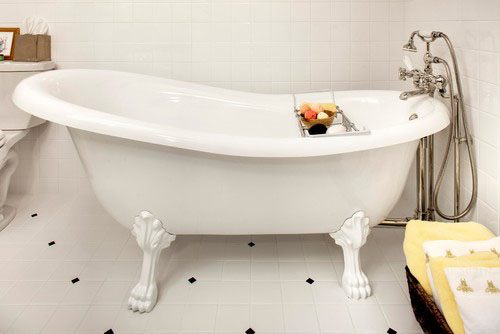
While enormous soaking tubs are all the rage in the master bath, a well-designed bathtub can cut water use in half and still leave plenty of room for a relaxing, spa-like experience.
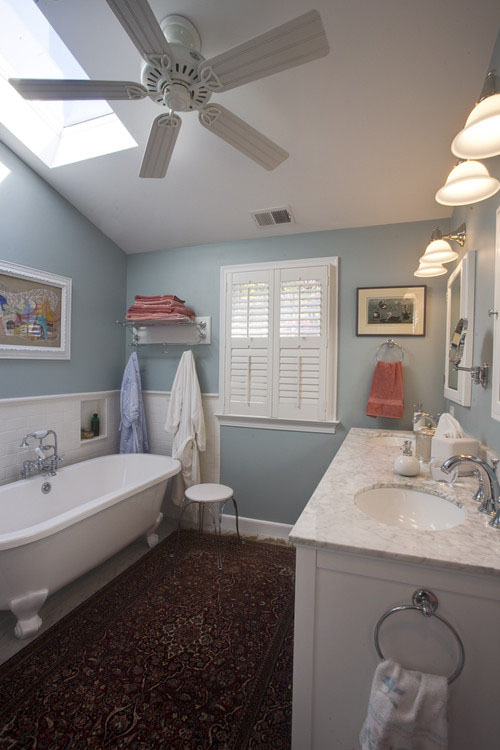
Eco friendly lighting utilizes as much natural light as possible. A skylight in the bathroom allows plenty of light into the room while maintaining privacy.
Good vanity lighting can help limit the amount of overhead lighting needed. And converting to LED fixtures means your lights will use less than 10% of the energy of their incandescent counterparts.
Although not every bathroom has room for a ceiling fan like this one, adding one to a bathroom with windows will increase HVAC efficiency dramatically.
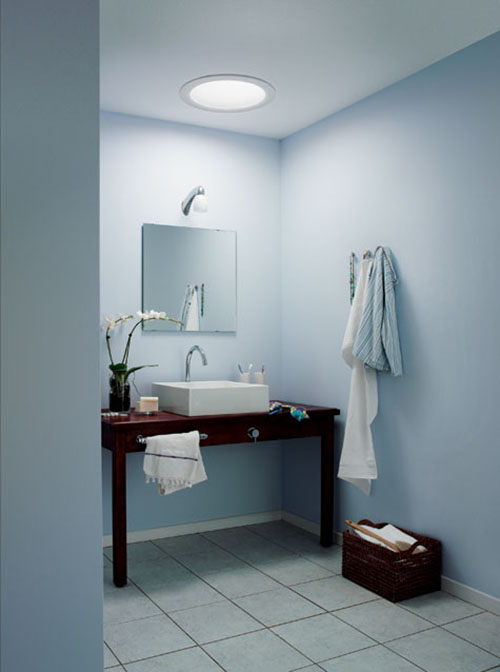
If your bathroom doesn’t have a window and a skylight isn’t an option, a sun tunnel, or tubular daylighting device (TDD), may be your answer. These affordable contraptions blend in with recessed overhead lights and send a large dose of natural light into the room to reduce artificial light consumption in the daytime. Try adding a sun tunnel to a shower in lieu of a recessed light.
Integrating sustainable and recycled materials
There’s a lot to keep in mind when it comes to choosing sustainable materials. Using recycled or salvaged materials—whether it’s from your old bathroom, a salvage yard, or elsewhere—is one of the best ways to limit your impact because there’s no effect on the planet from production and the materials are often sourced locally. Instead of throwing away existing materials from your bathroom demolition during a remodel, consider refinishing and reusing your existing bathroom vanity, reintegrating old bathroom tiles into a new tile design, or resurfacing an aging sink or bathtub instead of replacing it.
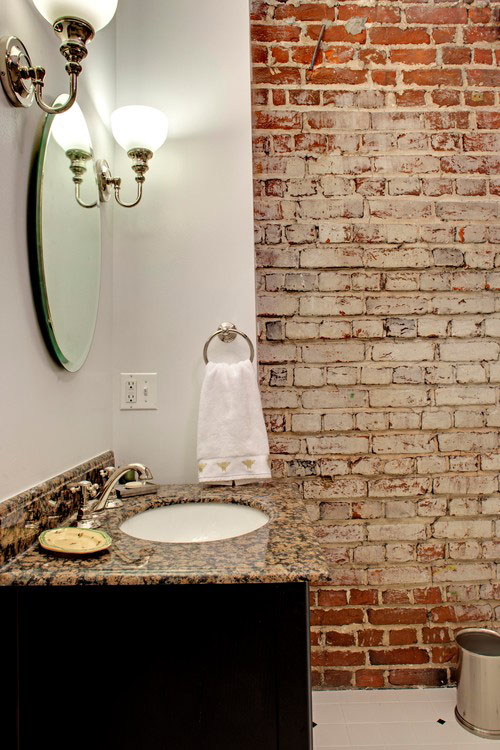
Keeping the old chimney as part of the new design gives this bathroom plenty of character, visual interest, and texture. The quartz countertop is an increasingly common choice for an eco friendly bathroom vanity, as the engineering process uses scraps from natural stone products and reduces waste. The maintenance-free qualities of quartz surfaces contribute to their eco-friendliness by eliminating products needed for sealing.
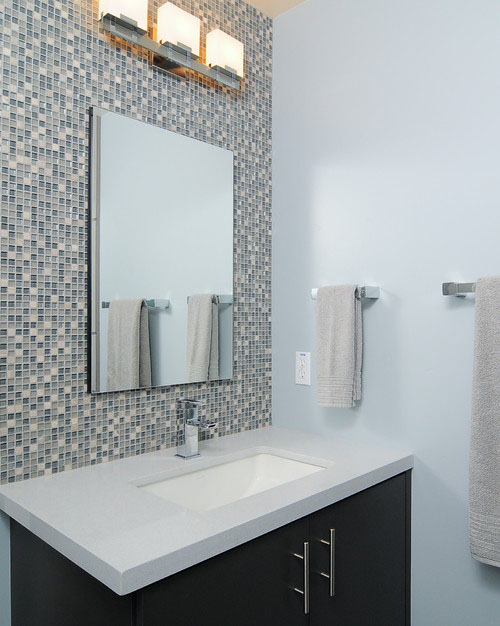
There are plenty of opportunities to create beautiful designs with colorful recycled glass tiles in the bathroom. Use them on vertical surfaces such as the shower walls, vanity backsplash, or to cover an entire wall like the design pictured here.
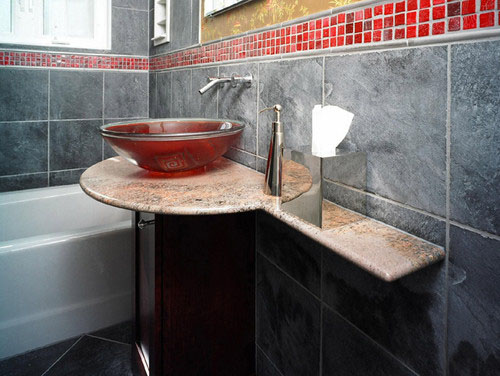
A recycled glass basin sink, quartz countertop, heat-absorbing slate tiles, and minimalist design come together to create an eco-friendly vanity in a striking contemporary bathroom.
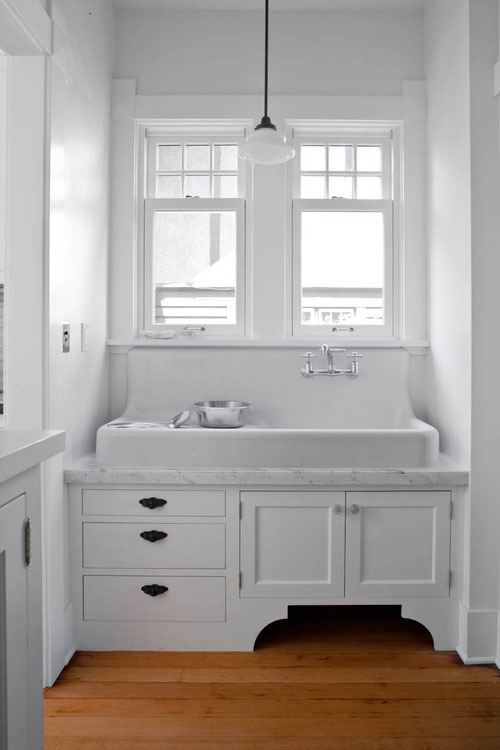
An antique sink like this one is perfect in a kitchen or bath and has the ability to take the style of any space in a whole new direction.
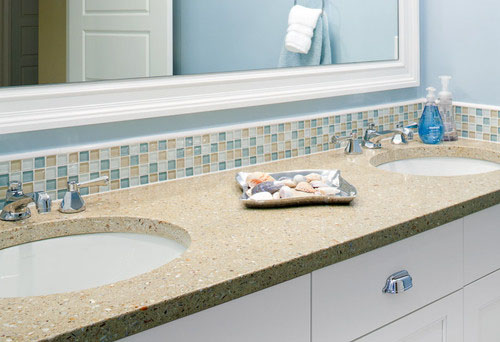
Recycled glass countertops mix glass and tinted cement with other scrap materials to create a wide range of different patterns and colors. The countertop pictured here is a mix of glass, stone chips, and mother-of-pearl. Manufactured by FuezStone at a wind-powered plant in Portland, OR, this countertop is eco-friendly on multiple levels.
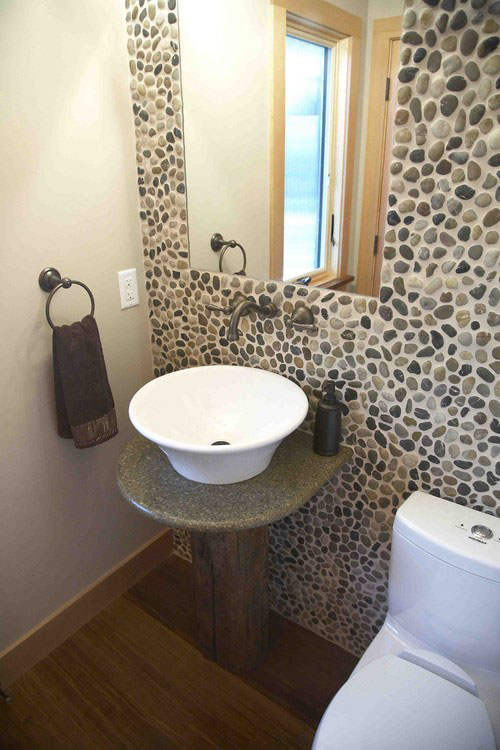
Salvaged materials offer another way to bring beauty, uniqueness, and sustainability to a space. This eco-friendly bathroom boasts fast-growing bamboo flooring, locally-harvested river stones, low-flow fixtures, and a sink pedestal crafted from a salvaged barn beam.
Creating a universal design
A universal design is appealing—both aesthetically and functionally—to a wide range of users, including children, the elderly, and both sexes. It’s not always easy catering to so many different style preferences and needs, but the reward is a space with a limited impact on the earth. Because the materials and overall design are selected for their longevity, the space limits the need for future renovations, which have an impact on the planet in themselves.
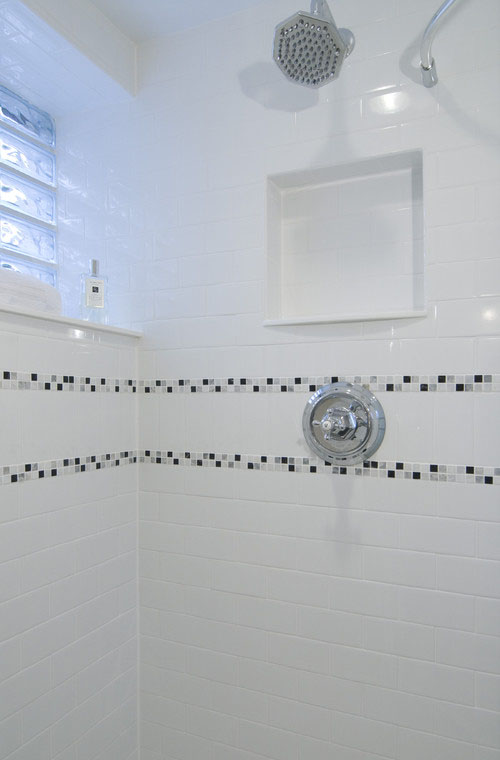
A universal design often brings a neutral color scheme that works well with any style, accent, or décor. A simple design can be dressed up and personalized with eco friendly bathroom accessories and other impermanent fixtures. Here a glass tile privacy window adds natural light, while black and white recycled glass mosaic tiles create an eye-catching accent band. Porcelain subway tiles complete a classic design that promises to remain timeless.
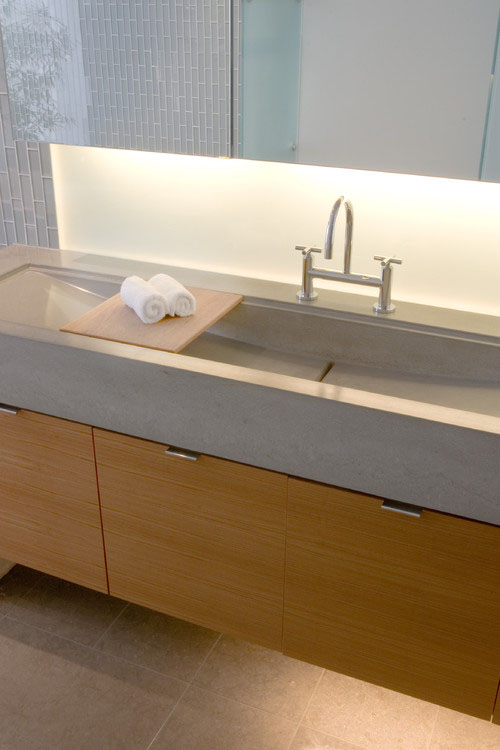
Custom-poured concrete sinks offer a clean, beautiful, and neutral design that’s eco-friendly to boot. Concrete is usually mixed and cast locally and sourced from locally-harvested natural materials. Concrete products can be tinted nearly any color, or mixed without tint for an industrial look.
This attractive, modern design expands countertop space with a custom basin rack, and would make an excellent baby bath, in addition to a universal master bath sink.
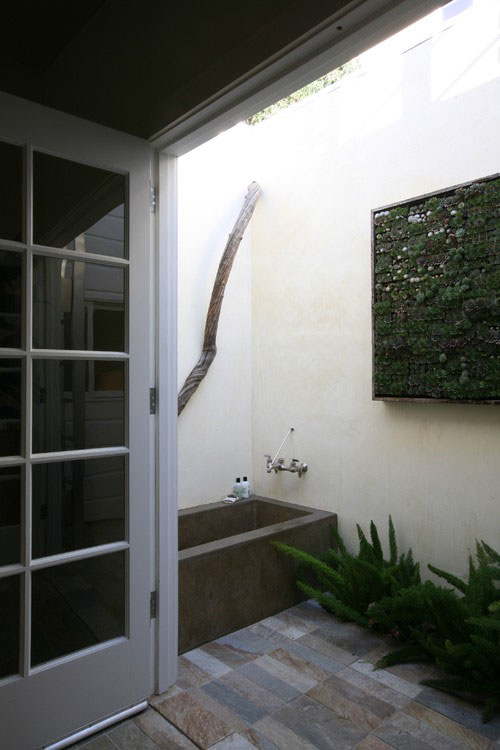
Materials that retain heat or keep their cool should be considered eco friendly as well. This outdoor soaking room increases its energy efficiency with a custom cast concrete bathtub and slate tile floor. Concrete and slate both absorb solar or artificial heat and then radiate the warmth slowly for hours, making these materials wonderful in the bathroom. A concrete bathtub also keeps bath water hotter for longer periods.